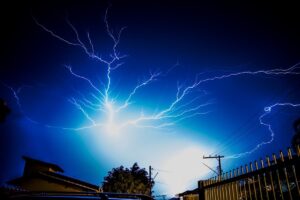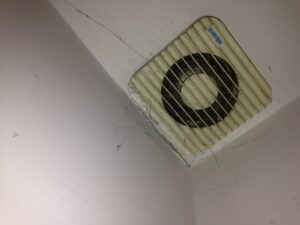UPDATED: July 6, 2020 What follows are some tips on how to handle a widespread power outage. At the bottom of this piece, you’ll find some easy methods of power outage prep.
But first, let’s review some relatively recent examples of widespread power outages — both in the United States and around the world.
On September 19, 2012, almost 7,000 homes in and around Portland, Oregon, went dark. It was Wednesday, just after 8:30 p.m. A Portland General Electric substation in Southeast Portland had malfunctioned. The ultimate culprit: faulty wiring.
The outage lasted less than two hours. This was a fairly common and not altogether troubling or inconvenient power failure.
However, earlier that day, more than 5,000 customers lost power due to equipment failures in Multnomah and Washington counties. These outages were reported to have been caused by a severed power line near the Portland Community College Rock Creek campus.
Thus, in the span of a few hours, upwards of 12,000 homes were without electricity.
Now let’s step back a few years.
On December 14, 2006, a windstorm disrupted power grids throughout Washington, Oregon, Idaho. The outage was so widespread that it stretched all the way up to British Columbia. Some areas were without power for more than a week.
Next up: more recent history.
It’s November 17, 2015. CBS News reports that “a major windstorm damaged the electrical grid in Spokane,” Washington’s second-largest city.
“Winds topping 70 mph in the Northwest snapped power poles, flooded roadways, and homes, and toppled trees that crashed through roofs and crushed cars,” CBS reported.
Even worse: “Tens of thousands of people (were) bracing for snowfall Monday and the possibility of preparing Thanksgiving dinner in the dark.”
Fast forward to 2019: It’s Halloween and 2 million people are going to soon be without power throughout the northeastern United States and southeastern Canada.
These are just a few examples of how a widespread power outage can affect the people who live in regions susceptible to wind and other powerful storms.
But as we mentioned above, it’s not always weather-related or caused by natural disasters. In 2003, a blackout that spread throughout the U.S. Northeast was found to be caused by a software bug.
And in India, unreliable and inadequate electrical infrastructure was to blame for the biggest power outage in world history: 620 million people, about 9% of the earth’s population were in the dark in the summer of 2012.
Power Loss and Power Outage Prep
Loss of power can happen at any time, for a variety of reasons, and affect you and your home in a variety of ways. Preparation is essential when unexpected events occur so that you and your family will stay safe during extended power outages.
In order to prepare for a power outage and for potential damages, your best defense is to maintain the following in your home:
- Written emergency checklist and a stocked emergency kit for you and your family. Make sure both are easy to access.
- Flashlight (one for every room or person in the house over 10 years old)
- Extra batteries
- Candles and matches (hidden safely from small children)
- Dry goods in case of a prolonged power outage; these may include trail mix or canned goods. And don’t forget your can opener. Try to stock up on non-perishable food. And figure out three meals for each person per day.
- Extra blankets and pillows, especially during cold months of the tear when temps are likely to drop below 40 degrees for more than 24 hours. If you have board games handy that you can play by candlelight, get them ready to. Try to make it fun for the family.
- Plastic containers: Fill these with water and place them in the refrigerator if you have room. Leave at least an inch of space inside each one to allow for the water to expand as it freezes. This chilled water will help keep food cold during temporary power outages by displacing air that can warm up quickly with ice and keep cold for hours without refrigeration. Throw away any food that has gone bad.
- Leave refrigerated medications in the refrigerator. Be aware that they will keep in this closed space for several hours without issue. Try to limit the number of times you open the refrigerator and freezer doors.
- Keep your car tank at least half full, as gas stations rely on electricity to power their pumps.
- Keep extra keys to your home in case of a power outage, particularly if you use your garage door as the main entryway for your home. In the event of lost power, this door will be difficult to open, and using key-operated doors is best.
- Know where the manual release for your garage door is located and the way to operate it. Because garage doors are heavy, you may need to lift this on your own to access your car. However, when doing so, make sure that small children are out of the way of the door and that you exercise extreme caution so as to avoid personal injury.
During a power outage, your local electrical companies will be working hard to restore power. Help them out by reporting your outage online if at all possible or by calling their power outage phone numbers. In many cases, cell phones will not function if cell towers are without power. Only landlines will work.
One last thing: Please install carbon monoxide detectors if you don’t already have them. Be aware of the potential for carbon monoxide poisoning and never burn charcoal or camp stoves in the house. You can find more information here.
Soon, your electricity will be restored and you will be glad you took precautionary measures to ensure the comfort and safety of your family.


